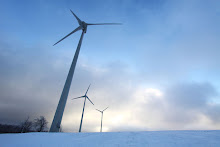The physical electric system is comprised of a highly complex and interdependent network of generators, transmission and distribution systems, and customer loads spanning thousands of miles. Despite the diversity of the system, it must always be tightly controlled. Supply and demand must be kept in balance continuously and voltage and frequencies must be kept within tight bounds or serious consequences may ensue-the customers' equipment may fail to run properly, grid equipment may be damaged, and, in the worst of scenarios, the system could crash and customers would experience outages. Managing this complex system in the short term (next day) and real time (current hour) is the responsibility of the electric system operator. System operators must schedule resources to ensure supply is available to match demand and, in real time, must continuously adjust generation levels to match fluctuations.
Operational Characteristics of Power Systems:
Operating power systems is a complex task largely due to a few key physical characteristics. First, electricity cannot effectively be stored. This means that the supply provided by electric generation must be continuously in balance with the demand of customers' usage. The operation of the system is further complicated by the fact that the path of electric flow is very difficult to control. Electrons simply flow on the path of least resistance, whether or not that path matches contractual agreements or the desires of the system operator. Thus interconnected utilities are inextricably entwined with the actions of their neighbors. The only way to avoid this interdependence is for utilities to isolate their systems. But because utilities depend on connections with each other for reliability and access to economic generation sources, this is not a viable solution.
Further complicating system operations is the speed at which system disturbances travel. Electricity travels at the speed of light, and any major system disturbances can be propagated across an interconnected grid in a matter of seconds. Disturbances can be dangerous because uniform voltages and frequencies must be maintained within strict limits to avoid degrading service to customers (e.g., voltage spikes knock off computers, low voltages dim lights, high frequency speeds the operation of electrical machinery and can damage generating equipment, etc.) And in an information society dependent upon computers and microchips, even momentary outages of computers-controlled equipment can cost customers millions of dollars and are not considered acceptable.
KEY CHARACTERISTICS OF POWER SYSTEMS:
*Electricity cannot be stored economically
*Supply and demand must always be in balance
*The path of electric flow cannot be controlled
*Disturbances travel very quickly
*Voltages or frequencies outside of limits damage equipment
*Even momentary outages are not acceptable
What System Operations Does:
System operators, also known as control area operators or balancing authorities manage the actions of generators, transmission owner and load serving entities within their designated control area, and coordinate with neighboring control areas and regional system operators to maintain acceptable levels of service. To do this, system operations must:
**Forecast demand in the day-ahead
**Schedule generation to match forecasted demand
**Schedule reserves and other ancillary services
**Schedule use of the transmission system among various market participants
**Communicate schedules to neighboring operators so flows across interconnections can be anticipated.
**Manage the system in real time by correcting imbalances minute-by-minute
**Correct any system disturbances that may occur
**Restore power should an outage occur
skip to main |
skip to sidebar
Energy Forecast & Updates
